Disclosure: Meeple Mountain received a free copy of this product in exchange for an honest, unbiased review. This review is not intended to be an endorsement.
As a builder in Ancient Greece, you’re charged with building the most beautiful, the most efficient city in the land. Naturally, though, there are petty politics that must be acknowledged. Merchants, for instance, refuse to have their markets next to another market; Military Barracks insist on being built at the edge of your City; and Temples demand to be surrounded by other aspects of your city.
Taking advantage of the fine stones from your Quarries may allow you to outbid your fellow architects for the finer Districts and Plazas—and reward you for building higher!

Μέγιστον τόπος. Άπαντα γαρ χωρεί (Place Is the Greatest Thing, As It Contains All Things)
Begin by giving each player a starting tile.
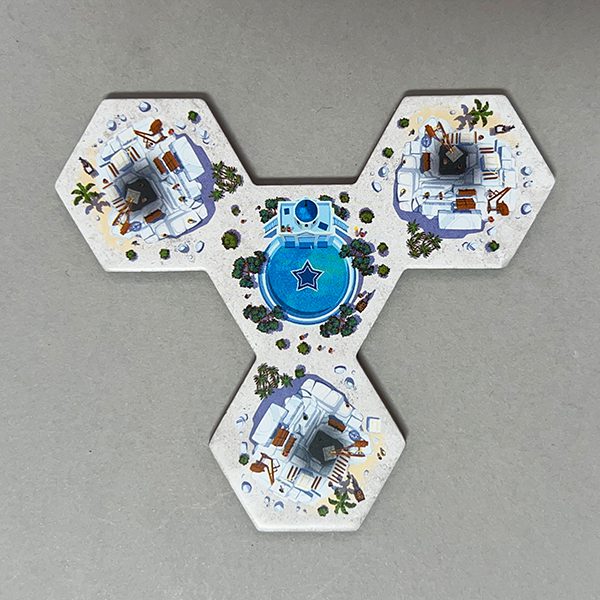
One player receives the First Player coin and a single gray wooden block, or “Stone” as they’re known in the game. Each player thereafter, in clockwise order, receives one stone more than the player to their right.
The backs of the tiles have numbers indicating the number of players (2-4) each tile is to be used with. Select the tiles for the number of players in your game and set them in stacks of Player Count +1. (Or, you could play with all of the tiles if you’d like a longer game)
Then set out tiles face up, equal to Player Count +2. Place them in a row, running right to left to form the Construction Site.
And you’re ready to play.
Άπας ό βίος των ανθρώπων φύσει και νόμοις διοικείται
(The Human Life Is Governed By Nature And Laws)
On a turn you will choose a tile from the Construction Site to add to your City.
In a mechanic I first saw in Suburbia, the tile to the farthest right is free. Each tile to the left of that will cost one Stone more than the tile to its right. (The second tile will cost you one Stone, the third tile will cost you two Stones, etc.)
Your City will be made up of five different Districts, each of which will score in different ways:
- Houses (blue). Only your longest group of adjacent Houses count.
- Markets (yellow), which cannot be adjacent to any other Market.
- Barracks (red) must be placed on the outer edge of your City.
- Temples (purple), which must be completely surrounded.
- Gardens (green) can be placed anywhere.
Akropolis encourages you to not only expand your City outward, but upward as well. If any of your tiles are placed fully atop the hexes of at least two different tiles, the Districts on that tile count for as many Districts as they are high. For instance, if your Barracks is on the second level of tiles, it will count as two Barracks during scoring.
However, none of your Districts will score if you don’t have the matching Plazas. Plazas are denoted by a number of stars on their tile. These stars accumulate throughout the game and act as multipliers for the Districts.
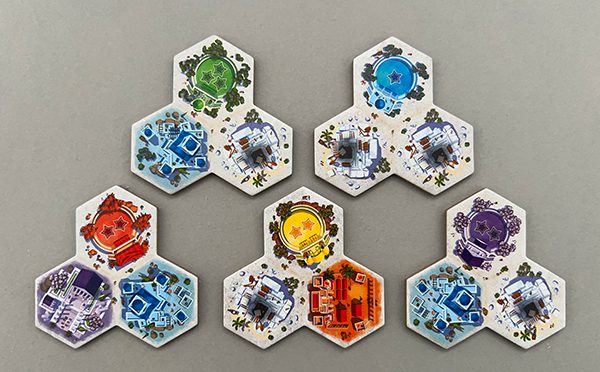
Say you have Market Plaza. The two stars on this Plaza means you’ll multiply each scoring Market in your City by two. However, if you have two Market Plazas, you’ll multiply each scoring Market by four. (Plazas on higher levels do not increase the same way Districts do.)
But what about those Stones, you ask. How do you get them?
On many of the tiles, including your starting tile, there will be Quarries. Quarries do not score you any points, but when you cover them with another tile, each Quarry you cover gains you a Stone.
If you cover a District or Plaza with another tile, they no longer score points at the end of the game. Therefore, it’s a good idea to try and arrange tiles such that you can cover only Quarries.
Play goes clockwise around the table until there is only one tile remaining in the Construction Site. Then the First Player coin moves to the player on their left and another stack of face-down tiles is selected and placed, face-up, in a row to the left of the last tile in the Construction Site.
Play continues in this manner until there is only one tile remaining. At that point, everyone should have had an equal number of turns and the game ends.
Tally your points on the handy included scoring sheet. The one with the most points wins.
Ζώμεν γαρ ού ως θέλομεν, αλλ’ ως δυνάμεθα
(We Live, Not As We Wish, But As We Can)
Before getting into my thoughts on Akropolis, I want to preface that with a word about the components and the box.
Inside the box you’ll find some seriously thick tiles. This makes them feel substantial in your hand, without being heavy. Given Akropolis is a game all about tiles, it’s nice to see the attention to the pieces.
While the box itself could have been smaller, Gigamic decided to include a cardboard organizer inside the box. Another nice touch.
Finally, the Player’s aid includes a graphic to help remember the scoring criteria of each District. More importantly, it also includes the number of each Plaza at each player count. (Essential for strategic planning!)
Χρόνος παις εστι παίζων πεττεύων. Παιδός η βασιλεία
Time Is a Child Playing Checkers; The Kingdom Belongs to a Child
Akropolis reminded me a lot of another recent game, Cascadia. Both games involve selecting tiles from a row of pieces to build an individual environment with specific (scoring) patterns in mind.
Also, like Wingspan, Terraforming Mars, and Altiplano, Akropolis is largely a multiplayer solitaire game. Your only significant interaction with your opponents would be if you took a tile from the Construction Site that they wanted.
More importantly, for me at least, Akropolis shares two important traits with Cascadia. The first is a sense of what we here at Meeple Mountain like to refer to as Builder’s Satisfaction: that feeling of having played your pieces in such a way as to construct an effective and pleasing environment
The second is that the two games are both challenging yet relaxing. While I love the brain-crunching intensity of Pendulum, TAMSK, and Terra Mystica, I’ve grown to appreciate games that combine a quiet puzzle with an interesting mechanic. Whether it’s the gathering and spending of food for birds in Wingspan or increasing the points scored by building up to higher levels in Akropolis, it’s nice sometimes to play a challenging game and feel more refreshed than worn out after the points are tallied.
However, don’t think that Akropolis is a game you can sleep through. There are two mechanics in the game that can give it a sharp edge. The first is the Plazas. While Plazas act as multipliers for your Districts, you don’t score those Districts at all without having at least one matching Plaza in your City. If you can keep your opponents from getting those Plazas, you can shut them down for those District points while increasing your own.
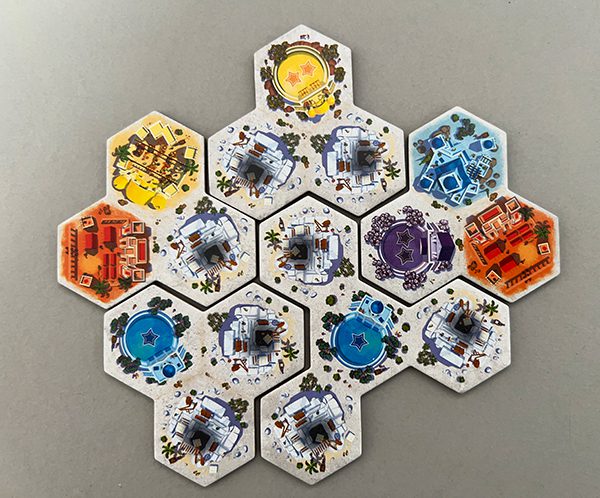
That’s also where the Stones come in. It’s important to create areas with Quarries that can be covered by other tiles to collect Stones. That way, if there’s a Plaza tile in the Construction Site that might cost you a few Stones to take, you’ll have them to spend.
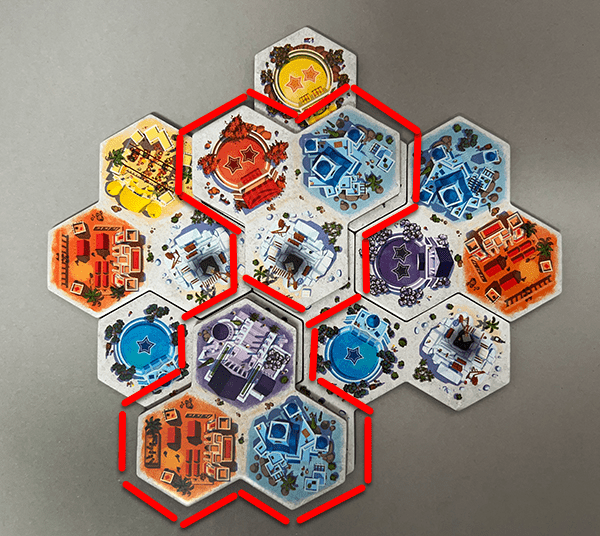
Your completed City will be a colorful one—and this brings me to my one complaint against Akropolis. For the amount of care the designers put into the components, the artwork used in the Districts is not distinctive enough to keep colorblind players from struggling. I’d love to see this addressed in a second edition.
Akropolis is a great game for the family, casual gamers, and regular gamers looking for something less taxing. It scales well from 2 to 4 players, and plays just as well if you choose to use all the tiles in the box, regardless of player count. My weekly gaming group had high praise for it. I suspect you might as well.


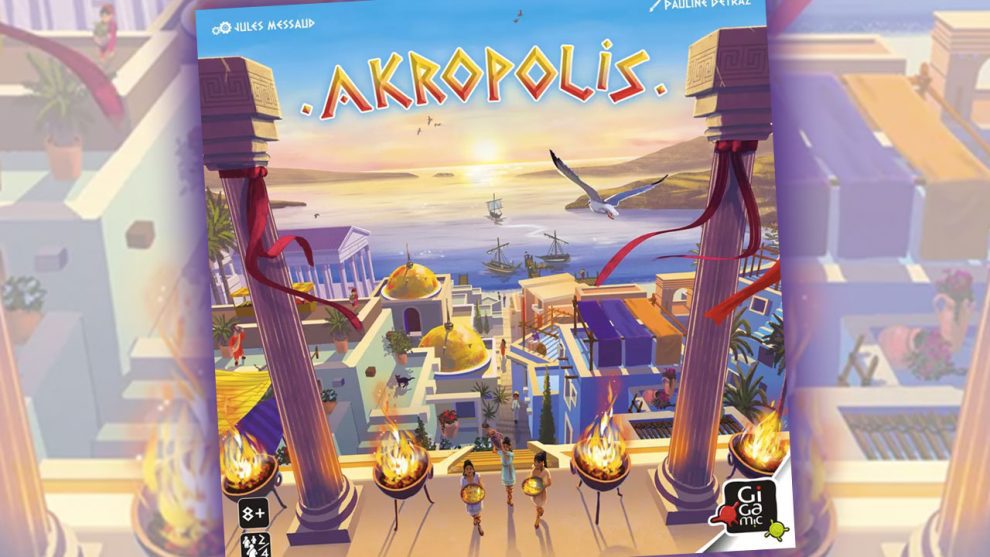









Add Comment